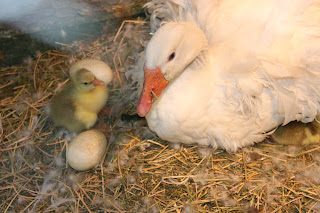2 cups cooked rice
2 tablespoons olive oil
1 medium onion, diced
3 cloves garlic, finely minced
1 can of green chiles - Optional
1 teaspoon cumin
Salt and pepper to taste
1 Can Diced Tomatoes
1 can (15 oz. each) pinto beans with liquid (Or prepare from dry beans first)
1 can (15 oz.) Black Beans, drained and rinsed (Or prepare from dry beans first)
1 1/2 cups water
1 (10 oz) package frozen corn or 1 can whole kernel corn, drained
6 green onions, white and green parts finely chopped - optional
1/2 teaspoon onion powder
16 burrito-sized (10-inch) flour tortillas
2 cups shredded Monterey Jack cheese
(If using dry beans, pressure cook, or crockpot SEPARATELY, the day before) Cook rice; set aside. Meanwhile, heat oil in large saucepan over medium heat. Add onion, garlic, and cumin; season with salt and pepper. Cook, stirring occasionally, until onions are softened and golden, being careful not to let the garlic burn. Add can of pinto beans with juice and mash gently in the pan (a potato masher or fork works great here). Add the can of black beans and the water and stir to combine. Bring to a boil, reduce heat to medium and simmer, stirring occasionally, until thickened, 10-12 minutes, being careful not to let the mixture stick to the bottom of the pot. Add diced tomatoes and corn; cook to heat through, 2-3 minutes. Stir in onion and garlic powders. Remove from heat; stir in green onions (if using) and cooked rice.
Heat tortillas in microwave for about 30-45 seconds or until all are warmed through.
If eating fresh, layer burrito mix, shredded cheese, avocado, and even lettuce and tomatoes if desired.
This recipe works great prepared ahead and made into freezer burritos. Just be sure to use the small fajita size tortillas, otherwise it is hard to reheat them. They are cold in the middle if you make them too big.
Recipe adapted from Mel'sKitchenCafe.com
2 tablespoons olive oil
1 medium onion, diced
3 cloves garlic, finely minced
1 can of green chiles - Optional
1 teaspoon cumin
Salt and pepper to taste
1 Can Diced Tomatoes
1 can (15 oz. each) pinto beans with liquid (Or prepare from dry beans first)
1 can (15 oz.) Black Beans, drained and rinsed (Or prepare from dry beans first)
1 1/2 cups water
1 (10 oz) package frozen corn or 1 can whole kernel corn, drained
6 green onions, white and green parts finely chopped - optional
1/2 teaspoon onion powder
16 burrito-sized (10-inch) flour tortillas
2 cups shredded Monterey Jack cheese
(If using dry beans, pressure cook, or crockpot SEPARATELY, the day before) Cook rice; set aside. Meanwhile, heat oil in large saucepan over medium heat. Add onion, garlic, and cumin; season with salt and pepper. Cook, stirring occasionally, until onions are softened and golden, being careful not to let the garlic burn. Add can of pinto beans with juice and mash gently in the pan (a potato masher or fork works great here). Add the can of black beans and the water and stir to combine. Bring to a boil, reduce heat to medium and simmer, stirring occasionally, until thickened, 10-12 minutes, being careful not to let the mixture stick to the bottom of the pot. Add diced tomatoes and corn; cook to heat through, 2-3 minutes. Stir in onion and garlic powders. Remove from heat; stir in green onions (if using) and cooked rice.
Heat tortillas in microwave for about 30-45 seconds or until all are warmed through.
If eating fresh, layer burrito mix, shredded cheese, avocado, and even lettuce and tomatoes if desired.
This recipe works great prepared ahead and made into freezer burritos. Just be sure to use the small fajita size tortillas, otherwise it is hard to reheat them. They are cold in the middle if you make them too big.
Recipe adapted from Mel'sKitchenCafe.com
















































